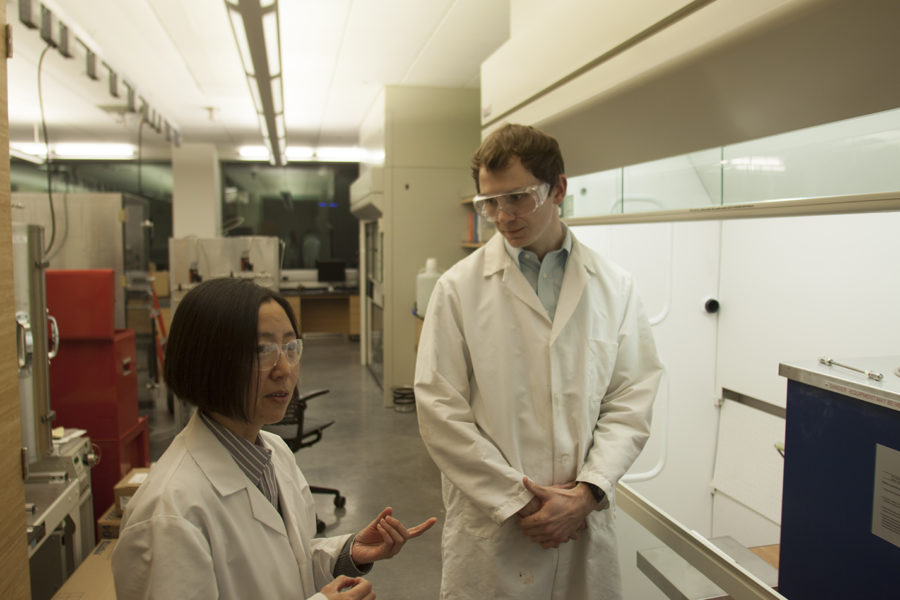Biofuel process mimics fossil fuel production and efficiency
November 27, 2012
Researchers at ISU-based Biorenewables Research Laboratory are exploring a process called solvolysis that resembles Mother Nature’s formula for making fossil fuels by using heat, pressure and a solvent.
Xianglan Bai, adjunct assistant professor of aerospace engineering, and Matthew Kieffer, graduate research assistant in mechanical engineering, use solvolysis to convert fibrous biomass, such as switchgrass and microalgae, into bio-oil that can be further processed into transportation fuels.
The solvolysis process uses biomass and a solvent, such as water, as its two main ingredients. A solvent is either a liquid or gas that takes into itself a solute, biomass, and creates a solution. Bai said researchers mix small amounts of fibrous biomass with a solvent before sealing the slurry-like solution into a vessel called a microreactor.
“[The microreactor] is two caps that you twist together and tighten,” Kieffer said. “So it’s a very small reactor.”
Bai said the microreactor is a small container designed to maintain the pressure inside. The container is then dropped into a bath of liquid tin or fluidized sand that serves as the heat source. After dropping the reactor into the tin or the fluidized sand bath, the pressure builds inside the reactor and the temperature increases.
“The idea is similar to putting it in an oven, but we want higher heating rates so we use tin or sand baths to quickly reach the desired temperatures,” Bai said. “We [add] the biomass into water or some other kind of solvent, put a cap on and heat it at a lower temperature. When we open the cap, everything’s cooked inside, [and] we get the liquid product in the process.”
Researchers then filter this solution to separate the solvent from their desired product. By using the solvent, Kieffer said he hopes solvolysis will yield higher quality end products, such as bio-oil to produce transportation fuels. Bai said the solvolysis process possesses an advantage that makes it an appealing idea for producing transportation fuels: energy efficiency.
Unlike other thermal conversion processes, Bai said solvolysis does not require its feedstocks to be sufficiently dry with moisture levels under 10 percent before the undergoing the actual process. This trait is useful because both the fibrous biomass and microalgae feedstocks usually have higher moisture levels; microalgae in particular contains about 80 percent moisture.
“[Solvolysis] is more energy efficient because there’s less heat being applied to dry the biomass,” Bai said.
Like most new ideas, solvolysis has its own share of problems. Kieffer said some of the problems researchers have encountered thus far with the process include finding the best combinations of biomass and solvents, and finding the right temperatures that produce the best results.
“[There are] a lot of variables at play that, if changed, might give you a different product,” Kieffer said. “[These are] problems encountered by most other thermal converting processes.”
Currently, researchers at the Biorenewable Research Laboratory, such as Bai and Kieffer, work to remove the limitations that keep the process from becoming a reality.
“When it comes to solvolysis, there are many factors to take into consideration,” Kieffer said. “We are in the process of screening out the best solvents and the conditions that would optimize production.”







